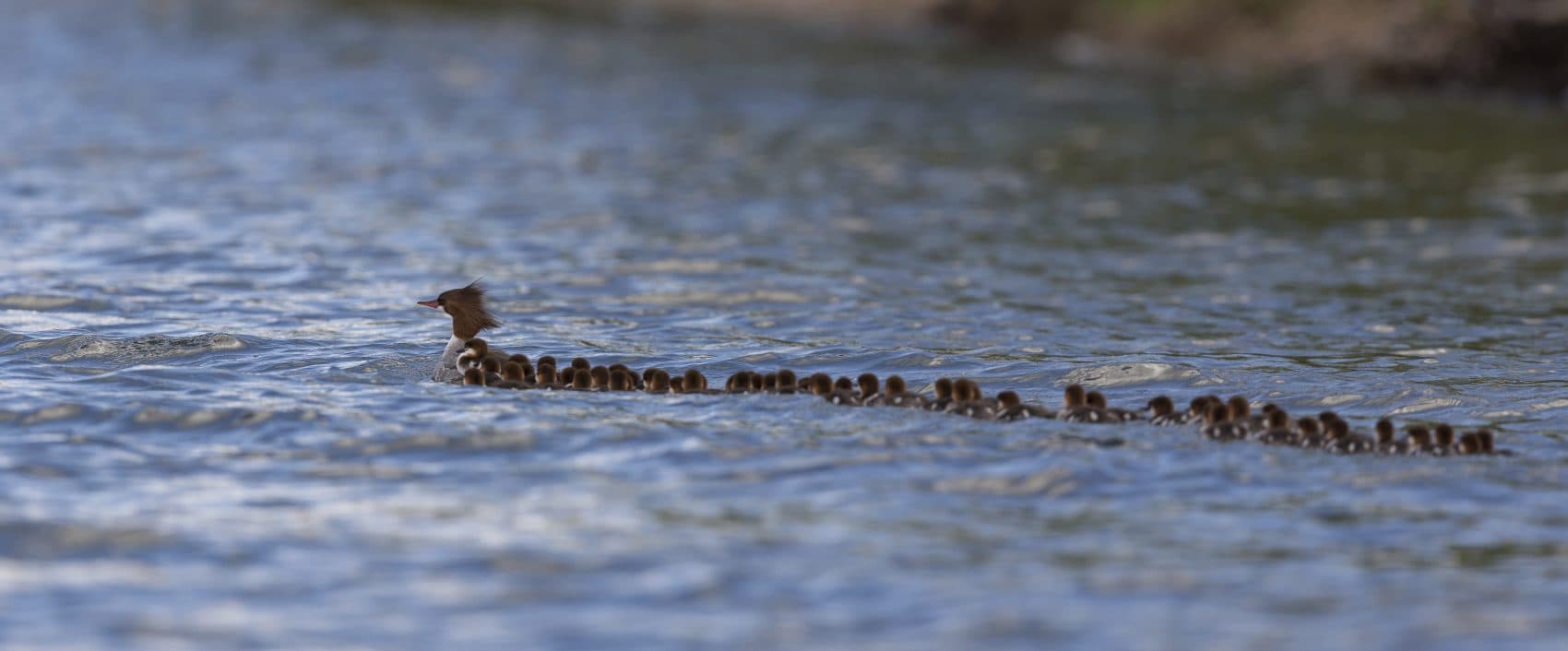Advertisement
Make Way For Ducklings (76 Of Them, To Be Exact)

A female duck in Minnesota was spotted on Lake Bemidji in June with 76 ducklings in tow.
Her dedication to motherhood went viral. But just how did the group get so large?
Turns out, it's not unusual for these ducks, known as common mergansers, to wind up with a crèche — "kind of an amalgamation of different broods," says Steve Cordts, a waterfowl staff specialist with Minnesota's Department of Natural Resources.
"We think it's probably a very old hen, probably nested for years and years, and perhaps she's kidnapped or stolen some other ducklings, perhaps different broods were kind of just feeding in the same area and got confused," Cordts tells Here & Now's Robin Young. "In some cases, perhaps some are orphaned, maybe a hen was killed or something. But we really don't know all the mechanisms."
The burgeoning brood has brought the country's attention to northern Minnesota, and even drawn comparisons to a Boston icon: nine bronze ducks in the city's Public Garden, from Robert McCloskey's 1941 children's book "Make Way For Ducklings."
"It's kind of our claim to fame now," Cordts says. "I told someone the word 'merganser' has probably been said more in the last 10 days than in the history of the world, because people are fascinated by them."
This segment aired on August 3, 2018.